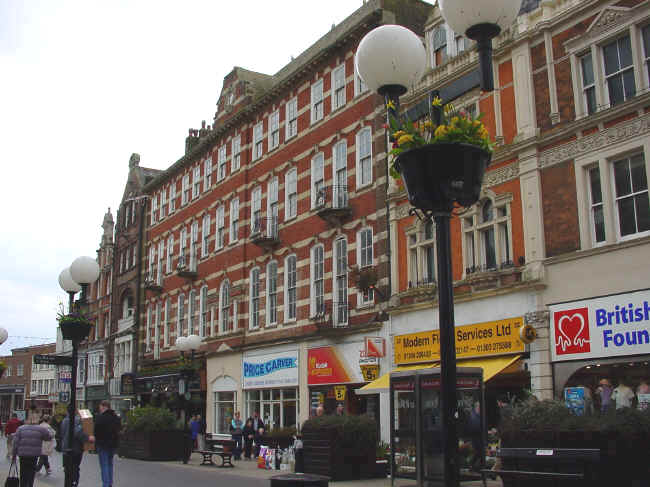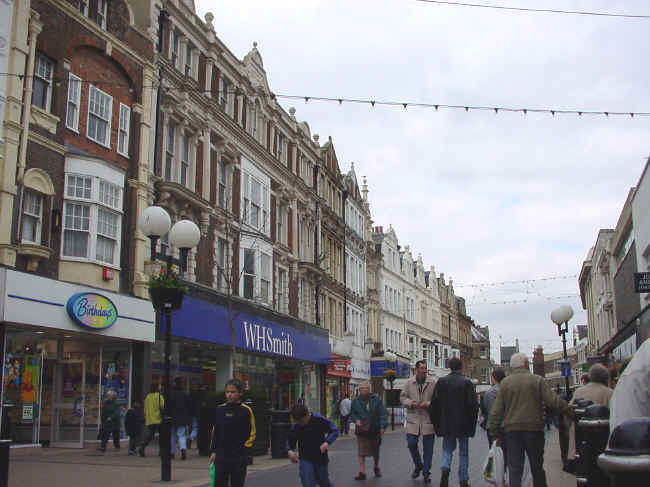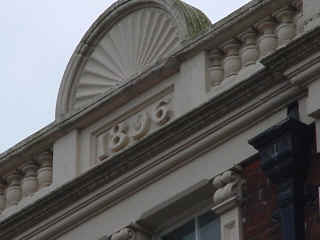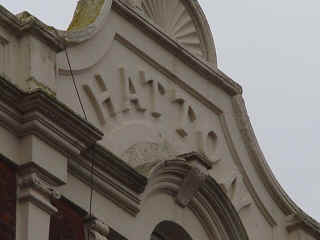
The Metropole Hotel
This magnificant building was once the Metropole Hotel and Bar.
The entrance was in the centre, still discernable from the arched
window. This was also the entrance to the
Plaza (Essolodo) cinema, which was hidden
behind this imposing facade.
On the left of the picture is the Market Square and, outside the
picture directly opposite the Metropole, St.
Mary's Church.
"Cannon Street is short, but its story is long, because its
associations run deeply into local history.
The name is not mentioned in the numerous charters and deeds stored
in the Dover Corporation's Muniment cabinet. The thoroughfare, in
ancient documents, is referred to as the King's highway; and if it had
borne any other name in those times, it must have been reckoned as a part
of Biggin Street. There was a Canon Ward .. in the earliest days of
the Dover Corporation, being that portion of the town for which the Canons
of St Martin-le-Grand were originally responsible; and for that reason,
modern literary purists have urged that in the spelling of Cannon Street
an 'n' should be deleted ... The presumption ... is that the street was
named after the Cannon family, who had property in it 250 years ago, not
withstanding the coincidence that it was part of Canon Ward."
(J.B.J. 1907)
To see the marvellous Victorian architecture of these buildings, you
have to look up above the modern shop fronts.

The shop of George Hatton, a little further up the street on the same
side (now W.H.Smith), dates from 1896, as shown by the elaborate stonework
on the top of the facia. |



